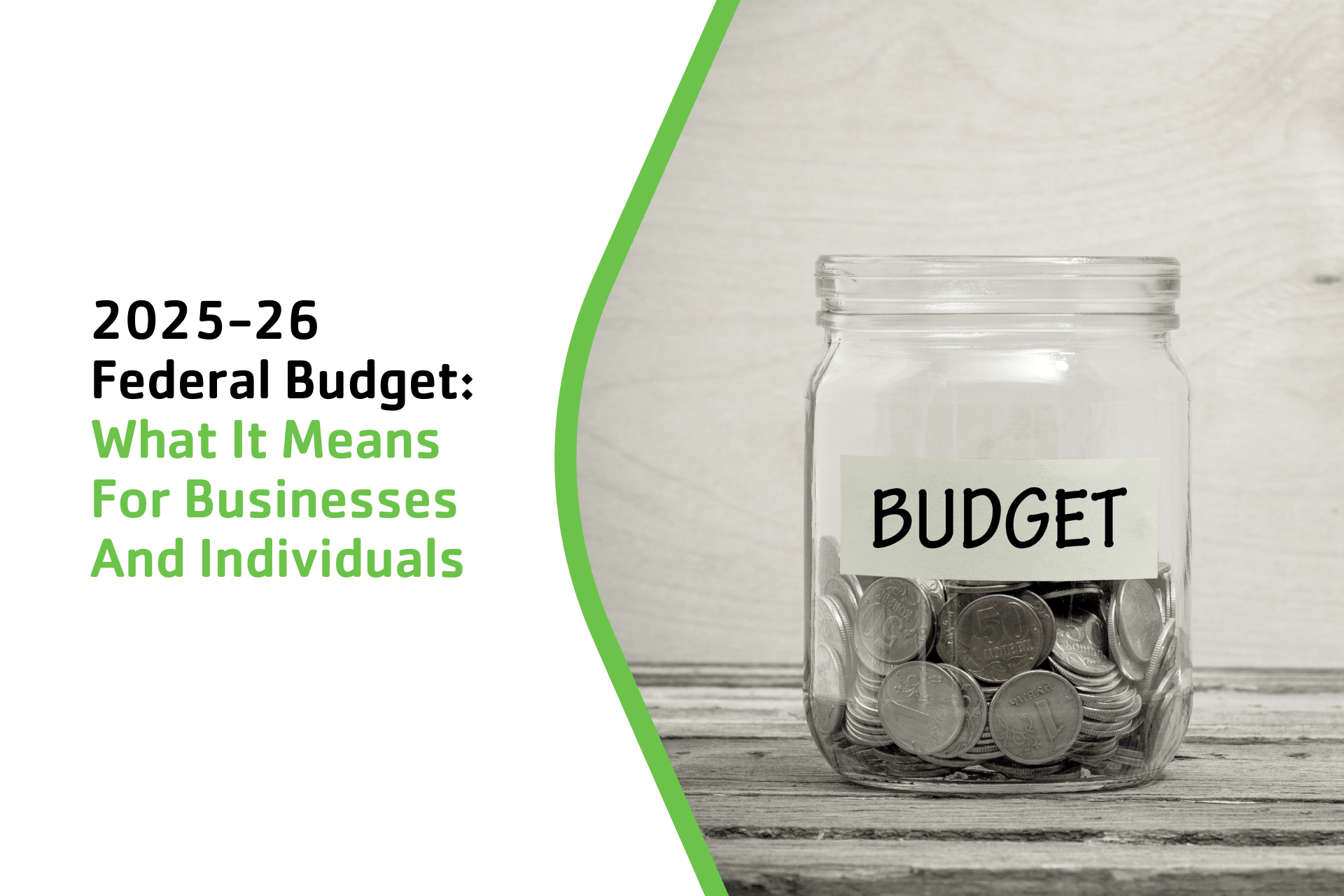The 2025–26 Federal Budget, handed down by Treasurer Jim Chalmers on 25 March 2025, outlines the Government’s key policy priorities in response to ongoing economic pressures. These include tax reform, cost-of-living relief, investment in Medicare and housing, education funding and targeted support for small businesses.
To help individuals, families and business owners navigate these changes, we’ve reviewed the Budget in detail, highlighting how the measures could affect your financial planning, operations and opportunities ahead.
Table of Contents
Main Highlights:
- New tax cuts for every Australian taxpayer.
- Additional energy bill relief for households and businesses.
- Funding to expand bulk billing and reduce healthcare costs.
- Expanded support for renters and homebuyers.
- New education and skills initiatives, including Free TAFE.
- Targeted support for small business digital security and resilience.
2025 Federal Budget: For Individuals
This section highlights cost-of-living measures aimed at individuals and families, including changes to personal income tax, student debt, healthcare access and social security support.
Income Tax Cuts
From 1 July 2026, the 16% tax rate (applied to income between $18,201 and $45,000) will be reduced to 15%, and from 1 July 2027, it will be reduced further to 14%.
These changes follow previously legislated tax cuts. For example:
- A taxpayer earning around $79,000 will receive a combined tax cut of $2,190 in 2027–28 compared to 2023–24 settings.
- Over 2.7 million Australians earning under $45,000 will receive up to $1,340 in tax relief.
| Thresholds ($) | 2024–25 & 2025–26 Rate | 2026–27 Rate | 2027–28 Rate |
|---|---|---|---|
| 0 – 18,200 | Tax free | Tax free | Tax free |
| 18,201 – 45,000 | 16% | 15% | 14% |
| 45,001 – 135,000 | 30% | 30% | 30% |
| 135,001 – 190,000 | 37% | 37% | 37% |
| >190,000 | 45% | 45% | 45% |
Energy Bill Relief
Relief continues for households feeling the pinch of power prices.
- $150 in electricity rebates for households in 2025 (2 × $75), in addition to the $300 rebate from 2024–25.
- Proposed retail energy reforms to improve price transparency and help consumers find better deals.
Cheaper Medicines & Healthcare Access
Prescription costs will drop further, and this applies to non-concession holders as well.
- PBS (Pharmaceutical Benefits Scheme) co-payment to be reduced to $25 from 1 January 2026.
- Over $1.8 billion was invested in listing new and affordable PBS medications.
- Cheaper contraceptives and new menopause/endometriosis treatments are added.
Medicare & Bulk Billing
Funding has been allocated to expand bulk billing and urgent care access.
- $7.9 billion to expand bulk billing (targeting 90% of GP visits bulk billed by 2030).
- 50 new Medicare Urgent Care Clinics (total: 137 nationally).
- $1.8 billion for hospitals and $793 million to support women’s health.
HELP Debt & Student Loan Changes
Key changes for graduates and those still repaying HELP (Higher Education Loan Program) loans.
- One-off 20% reduction in student loan balances, totalling $16 billion.
- HELP repayment threshold to increase to $67,000 from 2025–26.
- Introduction of a marginal repayment system for incomes under $180,000.
Social Security & Support
Expanded support for those doing it tough.
- $4.9 billion to expand JobSeeker eligibility and payment rates.
- $4.6 billion to boost Commonwealth Rent Assistance.
- $1.9 billion to extend Parenting Payment (Single) support.
2025 Federal Budget: Superannuation
This section outlines key changes to superannuation policy and compliance measures, particularly affecting employers and low-income earners.
- Medicare levy thresholds increased by 4.7% to exempt more low-income earners.
- Superannuation Guarantee rises to 11.5% in 2024–25, then 12% from 1 July 2025.
- From 1 July 2026, employers must pay super on payday.
- Continued compliance efforts to recover unpaid super from insolvent businesses.
2025 Federal Budget: Housing & Rental Support
Housing affordability and access remain a focus in this year’s Budget. This section covers homebuyer programs, housing supply measures, and support for renters and homelessness services.
Help to Buy Scheme
- Expanded income and property price caps.
- Up to 40% government equity contribution for eligible buyers.
- Temporary two-year ban on foreign buyers of existing dwellings (from April 2025).
Increasing Housing Supply
- Goal: 1.2 million new homes over five years.
- $1.5 billion for planning and enabling infrastructure.
- $3 billion in performance-based payments to states.
- $54 million for the adoption of modern construction techniques (e.g. prefab housing).
Rent Assistance & Homelessness Services
- 45% increase in maximum Commonwealth Rent Assistance.
- New National Framework for rent regulation and tenancy conditions.
- $9.3 billion for crisis accommodation and social housing.
- $1 billion for housing support for women and youth.
2025 Federal Budget: For Businesses
This section outlines how the Budget impacts small and medium enterprises through cost relief, compliance changes and digital capability support.
Energy & Cost Relief
Helping with rising bills and inefficiencies:
- $150 in electricity rebates for eligible small businesses.
- $56.7 million in Energy Efficiency Grants for 2,400 SMEs.
- Ongoing support schemes and excise pause on draught beer from August 2025.
- Tax cuts extended for 1.5 million sole traders.
Regulatory Compliance & Fair Trading
Levelling the playing field between big and small businesses:
- Extending Unfair Trading Practice Protection.
- $7.1 million to strengthen enforcement of the Franchising Code.
- $38.8 million in funding to the ACCC to investigate misleading pricing and unconscionable conduct.
- Plans to ban debit card surcharges pending RBA review.
- Stronger penalties for unfair contract terms.
- $3 million for ASIC to pursue phoenixing activity.
Digital Capability & Cyber Security
Security and digital growth continue as a priority. $60+ million since 2023–24 to uplift cyber and digital capability, including:
- Cyber Wardens
- Digital Solutions Program
- Cyber Resilience Service
- Cyber Health Check
Small Business Growth & Resilience
Supporting long-term growth for small businesses:
- National Small Business Strategy and procurement reform.
- $693 million for disaster recovery, mental health support and faster payment times.
- New national licensing scheme for electrical trades to reduce red tape.
- Ban on non-compete clauses for most workers earning under $175,000.
- $3.4 million in continued support for First Nations female entrepreneurs.
For Businesses To Keep In Mind
Beyond the headline measures, this section highlights initiatives in workforce development, advanced manufacturing, clean energy and international trade.
Workforce, Skills & Training
- $10,000 for apprentices in housing construction.
- $5,000 hiring incentive for priority jobs (extended to Dec 2025).
- 100,000 Free TAFE placements from 2027.
- Expanded university access for underrepresented students.
Manufacturing, Trade & Clean Energy
Support for green metals, hydrogen, critical minerals and clean tech.
- Expansion of sustainable procurement initiatives.
- $20 million for “Buy Australian” campaign to promote local products.
- $16 million for Australia–India trade initiatives.
- Procurement reforms to help Australian-owned SMEs win more government contracts.
Regional Support & Infrastructure
- $1.2 billion disaster cleanup package following Cyclone Alfred.
- Regional construction tenders from $17.1 billion transport package.
- $2.4 billion support package for Whyalla steelworks.
- The government’s commitment to preserve regional airline routes if required
What The Budget Didn’t Address
While the Budget covers a wide array of programs, several areas of concern remain for the business sector:
- No mention of the Bendel case and its implications for Division 7A.
- Instant Asset Write-Off not extended beyond 30 June 2025; legislation still pending for FY2025.
- No new tax incentives or business investment stimulus.
- Limited support for Australian manufacturing through procurement or domestic incentives.
- No new R&D or innovation-focused funding beyond prior announcements.
What Does The Budget Mean For Me?
Whether you’re a business owner, parent, first-home buyer or employee, this Budget may impact your financial decisions.
If you’re unsure how the Budget may affect your business or household, our accountants, bookkeepers and advisers are here to help you assess the changes and plan with confidence.
Want to know how this Budget affects your specific industry or business? We can help you unpack the fine print and prepare for what’s ahead.
Get in touch with Carbon to discuss your next steps.
Author’s Note
Budgets, particularly in the lead-up to elections, often reflect political strategy as much as economic policy. While this year’s Budget includes some welcome cost-of-living measures and commitments to essential services, it leaves notable gaps when it comes to long-term productivity, innovation and business investment.
The absence of clarity on the Instant Asset Write-Off, lack of reform following the Bendel case, and minimal support for domestic manufacturing or R&D may disappoint many business owners. It’s important to interpret these measures in context, acknowledging what’s been announced but also keeping in mind what’s still missing or deferred.
As always, our goal is to provide balanced insight so clients can make informed financial and strategic decisions, regardless of the political cycle.






















